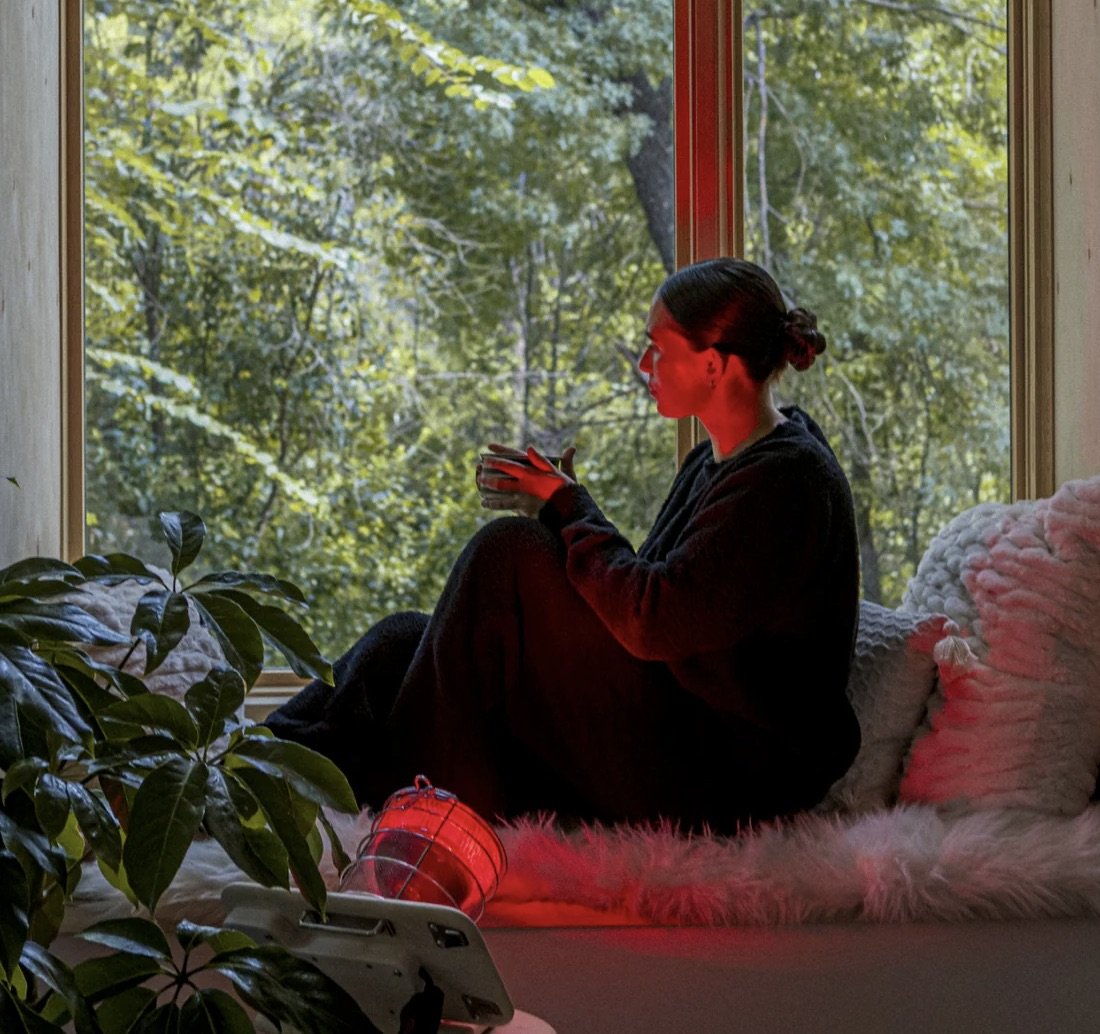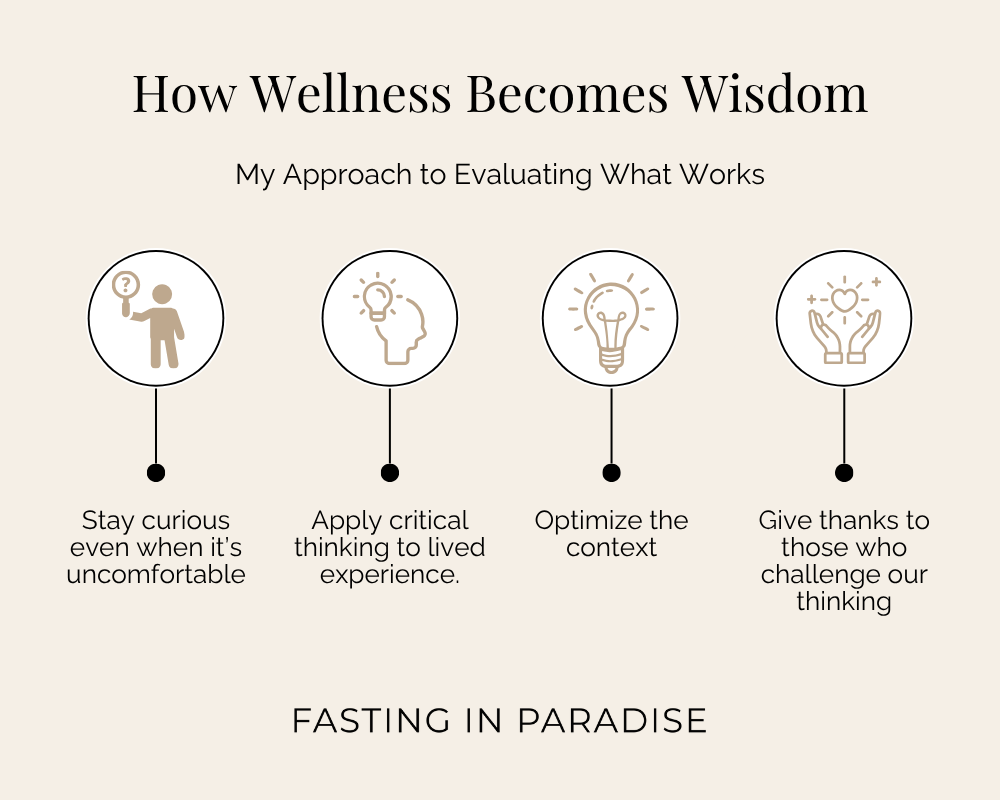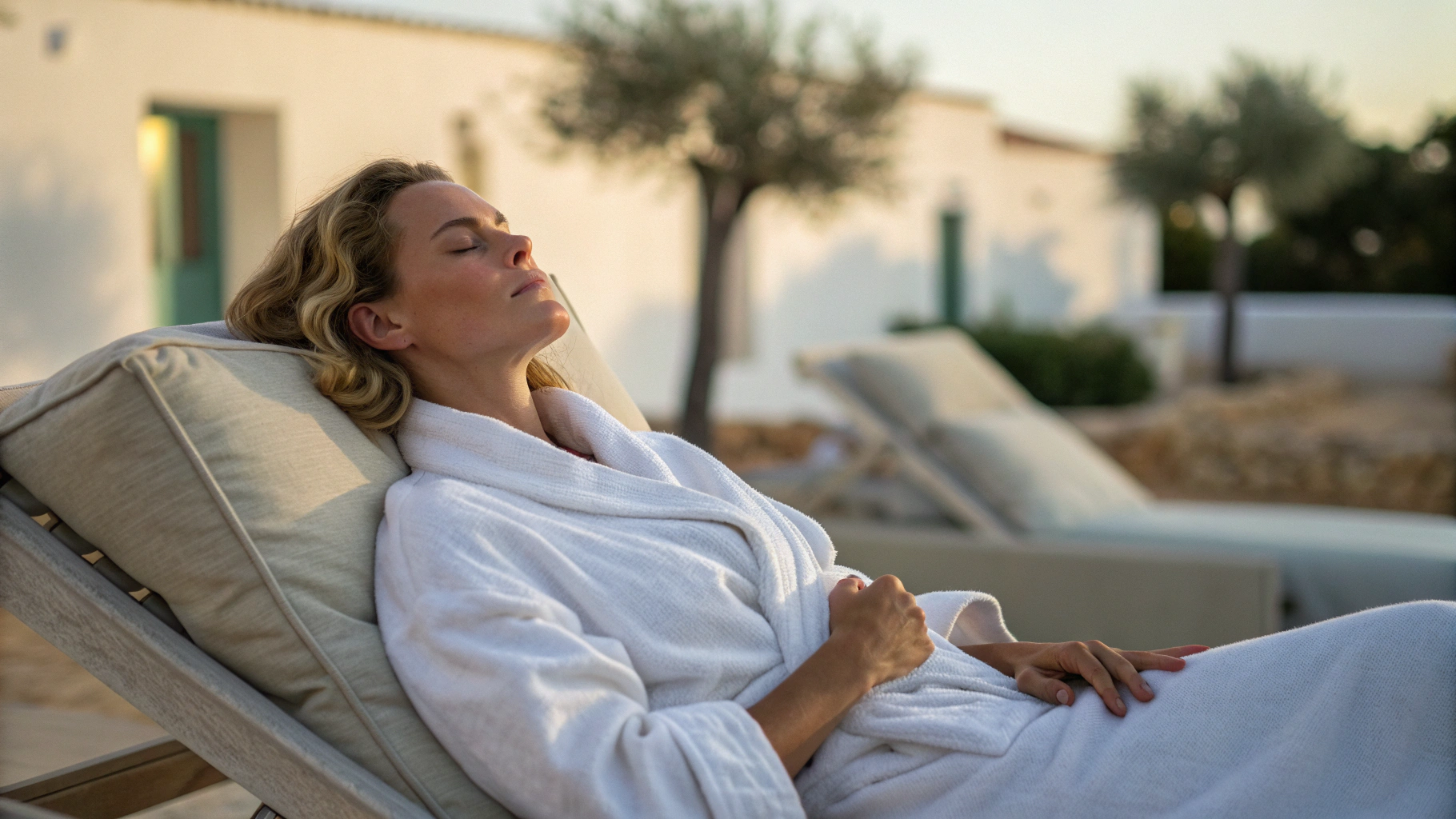How an Instagram Argument Changed a Major Purchasing Decision (And What That Means for Your Experience)
A case study in staying curious when it's uncomfortable
The Post That Made Me Pause
I was scrolling Instagram when a post stopped me cold. The opening slide said: "The Hidden Cost of Near Infrared Light."
The core argument was provocative: "Energy applied without dissipation is not healing. It is accumulation."
I found the science complicated—referencing heat transfer theory, phonon excitation in piezoelectric lattices, and thermodynamic principles that required me to think critically and dig deeper than the usual wellness soundbites. I love that kind of challenge. It's exactly the kind of intellectual thinking that separates real investigation from simply accepting what everyone else is doing.
Here's the thing: I've been using a red light therapy device most mornings for the last four years. It feels good. It gives me energy. I look forward to my 15-minute meditation while bathing in red light. And I was literally about to purchase a 5-person sauna with built-in red light panels for our retreat build.
So naturally, my first instinct was to keep scrolling.
The Uncomfortable Truth About Staying Curious
I almost didn't engage with that post at all.
There was a part of me that wanted to protect what I'd been doing the past four years—to not face the potential that something I'd invested in for my health could actually be harming me. It's easier to stay in the comfort of "this feels good, so it must be right" than to wade into complicated science that might challenge my existing practices.
That's denial, and I recognize it when it shows up.
But I've learned something over the years: the practices worth keeping are the ones that can withstand questioning. If something truly serves my body, it doesn't fall apart under scrutiny—it holds up more closely. And if it doesn't serve me? I'd rather know that now than continue out of habit or ego.
So, I pushed through that initial resistance and dug into the science. Not to prove the post wrong or to defend my choices, but to genuinely understand: Is there something here I need to consider?
And here's what I found: middle ground.
The Glow Infrared Therapy Light by Sauna Space (FIP readers get 10% off with my link!)
The complicated science helped me affirm that what I'm doing IS working for me, AND that a few environmental tweaks could make it even better. I won't turn a blind eye just because I'm invested in one philosophy or because "it feels good." I want to do things that feel good AND know they're actually working the way I think they are.
That distinction matters.
When Curiosity Meets Defensiveness
Here's where it got tricky for me: "So, what you're suggesting is that I could improve my morning RLT use by opening a window, so that natural light and airflow are circulating; moving it to my patio where I'm outside; doing some stretches during or after, and making sure my body has adequate circadian light exposure during the day or before; and if stressed, skip it?"
I was genuinely trying to understand how to apply this framework practically. If the mechanism is about dissipation, then creating conditions for dissipation seemed like a logical solution.
The author's response? "Dr. Anne's heat transfer is no theory and you're actually mocking her lifelong work saying that. And no, you can't 'add' dissipation with habits— it's either built into the treatment or not on those heat days."
Wait. What?
I asked a sincere question about practical application and got accused of mocking lifelong scientific work. That's quite a leap.
The Scientific Method Is Not Mockery
Here's what happened in that exchange: I encountered someone presenting a thermodynamic framework and asked, "How do I apply this?" That's not mockery. That's literally the scientific method. "Show me how we bridge the gap from theory to practical implementation."
When someone says "artificial light lacks dissipation mechanisms," asking "can I add those mechanisms?" is a reasonable next question. The fact that the response was defensive rather than explanatory told me something important about how to weigh this information.
Extracting Signal from Noise
Despite the prickly exchange, something valuable happened: I started thinking more critically about a major purchase I was about to make.
The Instagram post, for all its absolutism and defensive delivery, contained a kernel of truth worth considering. Even if I didn't agree with the black-and-white framing ("you can't add dissipation with habits"), the underlying concept—that context matters for how the body processes energy—resonated.
So I did what I always do: I held multiple perspectives simultaneously without collapsing into either extreme.
The framework had merit: Context does matter. Light therapy in a sealed room without airflow is different from outdoor exposure with natural convection and evaporation.
The absolutism didn't hold: The claim that you "can't add dissipation" contradicts the author's own listed mechanisms (airflow, movement, hydration). These ARE achievable through behavioral modifications.
My body had data: My morning red light routine feels beneficial. I have more energy after use. There are no negative symptoms suggesting harm.
The purchasing decision required reconsideration: Did I really need a sauna with built-in red light panels, or would a traditional infrared sauna better serve my actual needs?
The Decision Shift
I'm no longer purchasing the sauna with integrated red light therapy.
Instead, I'm working with Sunlighten on a custom-sized traditional sauna that will fit perfectly into our casita space without compromise.
Why?
Not because I think red light therapy is harmful—I'm keeping my standalone device and will continue my morning practice, making a few adjustments to encourage energy disapation. But because the Instagram discussion made me realize I was defaulting to "more features must be better" rather than "what actually serves my needs?"
A traditional infrared sauna gives me:
• Deep tissue heating and detoxification (the primary sauna benefits)
• Significant cost savings vs. the RLT-integrated model
• No concerns about "unvented thermodynamic load" from built-in panels
• The flexibility to use red light separately when and how it serves me best
What This Process Reveals About My Approach
This entire experience—from initial resistance to curiosity to defensiveness to integration to decision-shift—is messy and human and exactly how I approach everything at Fasting in Paradise.
I'm not claiming to have it all figured out. I'm sharing what I'm learning in real-time.
I try to stay curious even when it's uncomfortable. That first impulse to keep scrolling? I notice it now. The wellness space is full of passionate advocates who sometimes conflate questioning with attacking, and it's not my job to protect existing practices from scrutiny. I'm learning to hold space for both.
I apply critical thinking to lived experience. Theory is interesting, but "how does this work in practice?" is the question that keeps me grounded. I'm not interested in wellness as dogma. I'm interested in wellness as ongoing experimentation and honest evaluation.
I'm also optimizing the context (sauna in casita space that opens directly to the pool and morning sun, not in a basement or windowless room afterward). Both/and, not either/or.
I want to thank people for valuable insights that help me arrive at what works best for me. Despite the rocky exchange, I genuinely thanked the Instagram poster. His framework influenced a major decision. That's worth acknowledging, regardless of delivery.
What This Means for You as a FIP Guest
When you come to Fasting in Paradise, you're not getting protocols I read about in a blog post and implemented without question. But you're also not getting someone who claims to have all the answers.
What you're getting is someone who's willing to do the uncomfortable work of questioning her own practices—even after years of investment and when change means refinement over certainty.
Every element of your retreat experience has been:
• Researched from multiple angles, even when the science gets complicated
• Experimented with personally, including the messiness of real consequences
• Tested on myself first, with real consequences (like changing a $10K purchase)
• Refined based on what actually works, not just what sounds sophisticated
That's the difference between someone who curates a wellness experience and someone who lives it.





